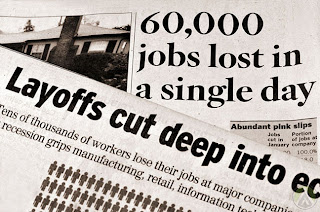Aside from these three big businesses, most companies are also either closing their doors or letting people go. While these layoffs or bankruptcy issues are obviously business decisions, the laid off employees are the ones who are feeling the brunt of the situation.
Consider having a stable job for ten years and finding out the next minute that you're one of the employees being let go. You might feel bitter and angry – or you might just feel fed up with the situation. However, know that no business executive would willingly let people go if there is another viable option to the company's survival. When the ship is sinking, executives tend to look for ways to preserve their employee's livelihoods while still maintaining a positive cash flow. If more losses are incurred, then the business would have to either let people go or go under.
Imagine that you're running a family-owned enterprise that has been in your family's name for the last 200 years, and you have over 1,500 employees on your payroll. Unfortunately, along with the recession came
more competitors that are selling your items for relatively low prices. You are left with more debts and you still have to pay your employees. The prudent solution would be to downsize and cut on divisions that are not actively contributing to the bottom line. Yet with such a rich heritage on the line, how do you say good bye to employees that have been on your family's payroll for decades?
You can answer this in two scenarios. For one, you look for the least profit-inducing division, such as your customer support team. This team has 15 employees and constitutes about $105,000 worth of expenses in a month. You then outsource your customer support needs to an outsourcing firm and save more than $80,000 per month. This equates to $960,000 savings in a year.
Or you could be idealistic and decide to shoulder all the expenses. In two months, your debts will exceed your capital and you're on the brink of bankruptcy. Another month later, you are no longer earning anything and you're forced to close a company that has been in existence for centuries. All of the 1,500 employees that you've tried to protect are now jobless.
In a way, deciding to lay off people could be one of the soundest decisions a company could ever make. The company could be saving sufficient amount of money by letting a portion of its payroll go – enough to keep the company floating for another year or two. This would entail more secure positions for those who are kept on board.
 Similarly, laid off employees are not let go without a backward glance. Take a look at Zappos. In an effort to be proactive about the precarious economic climate, the leading e-commerce reseller decided to let go 8% of its staff. Aside from being transparent and disclosing actual business figures, the firm also took the high road and offered more than what was mandated by the law. Firms are required to give at least two weeks worth of severance pay and other benefits, but Zappos gave its employees about two months pay and additional incentives for employees that have been with the company for three years or longer. Furthermore, it offered to reimburse consolidated omnibus budget reconciliation act (COBRA) payments up to six months.
Similarly, laid off employees are not let go without a backward glance. Take a look at Zappos. In an effort to be proactive about the precarious economic climate, the leading e-commerce reseller decided to let go 8% of its staff. Aside from being transparent and disclosing actual business figures, the firm also took the high road and offered more than what was mandated by the law. Firms are required to give at least two weeks worth of severance pay and other benefits, but Zappos gave its employees about two months pay and additional incentives for employees that have been with the company for three years or longer. Furthermore, it offered to reimburse consolidated omnibus budget reconciliation act (COBRA) payments up to six months. Following Zappos' example, it only goes to show that there could be a good side to a company's decision to lay off its employees. As CATO Institute senior fellow Michael Tanner writes “economic policy is not about
Provided that the companies are giving higher severance pay and additional benefits, yet at the end of the day it is not sufficient. Most people would still prefer to have a job with lower remuneration than to be unemployed, especially now that the economy is still mending from crisis. Thus, no matter what the company has to offer, being laid off is a hard pill to swallow. With that said, the economy is changing, and the sooner one begins to hunt and target new opportunities based off on past lessons from previous companies, the quicker they can find their place in this new economy.



